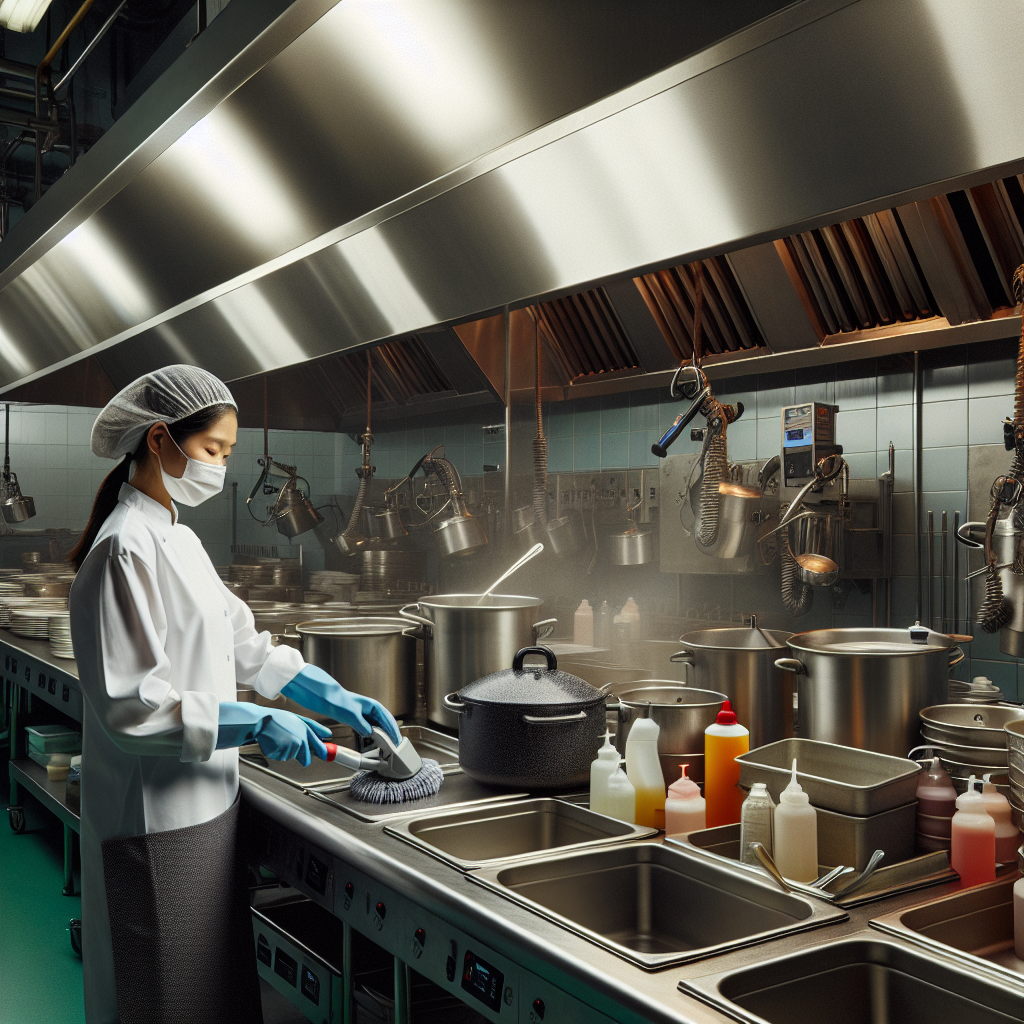Essential Hood Cleaning Guidelines for Food Banks and Charitable Kitchens
When Charitable Kitchens Need a Clean Sweep
In the bustling world of food preparation, the importance of maintaining a clean and efficient kitchen environment cannot be overstated. This rings particularly true for nonprofits and food banks that dedicate their efforts to feeding the less fortunate. While the heart of these organizations is in the right place, regulations concerning kitchen cleanliness should not be overlooked. Enter the unsung hero of the culinary world – hood cleaning.
Understanding Hood Cleaning
The kitchen hood, or exhaust hood, is a critical component in commercial kitchens, including those run by food banks. Its primary role is to ensure that smoke, steam, and grease-laden vapors are vented out of the kitchen, maintaining a safe and healthy environment for cooking. Over time, grease accumulates, posing a fire hazard and potentially leading to violations of health codes. Regular commercial kitchen hood cleaning is crucial to safe operations.
Why Is Hood Cleaning Crucial for Food Banks?
Here are several reasons why restaurant hood cleaning is especially important for food banks and similar charitable organizations:
- Safety: Grease buildup is a significant fire hazard, and with food banks already operating on tight budgets, the last thing they need is an avoidable disaster.
- Compliance: Health codes apply to all food-serving establishments, charitable or not. Regular exhaust hood cleaning ensures compliance with these regulations.
- Cost Efficiency: Regular cleaning prevents the buildup of grease, which can lead to more extensive maintenance needs or costly repairs.
- Efficiency: A clean exhaust system works better and more efficiently, helping to maintain a comfortable working environment for volunteers.
Advanced Hood Cleaning Techniques
Professional hood cleaning services in regions like Los Angeles, Santa Monica, and Orange County employ advanced cleaning techniques to ensure thorough cleaning. These services often include:
- Disassembly and Washing: Detachable parts of the hood are removed and washed separately for thorough cleaning.
- Pressure Washing: A powerful technique to remove stubborn grease from the hoods and ducts.
- Polishing: Not just cleaning, but polishing the hood helps in maintaining its functionality and lifespan.
- Inspection: Post-cleaning inspections to ensure everything is in compliance with safety standards.
Challenges Unique to Nonprofit Kitchens
Food banks often operate in facilities not originally designed to be professional-grade kitchens. This presents unique challenges, including:
- Space Constraints: Limited space can make the installation and maintenance of effective exhaust systems more difficult.
- Budget Limitations: Nonprofit organizations must be mindful of costs, so ensuring cost-effective hood cleaning solutions is essential.
- Volunteers: Volunteer staff may not always have the training or experience to maintain a high level of kitchen cleanliness, necessitating professional intervention.
Finding the Right Professional Service
In major urban areas like Los Angeles and surrounding locales, finding a reputable hood cleaning service is critical. The right professionals will offer not just cleaning but also guidance on maintaining hygiene standards between cleanings. Here are some tips for selecting the right provider:
- Reputation: Look for providers with strong reviews and testimonials.
- Experience: An experienced service will be familiar with local regulations and challenges.
- Customized Services: Choose a company that offers services tailored to the specific needs of nonprofit facilities.
- Cost-Effective Solutions: Ensure the service provides transparent pricing to help with budget management.
The Positive Impact of Regular Hood Cleaning
While the focus of food banks is on helping the community, maintaining the kitchen’s cleanliness is an essential part of that mission. Through regular commercial kitchen hood cleaning, food banks can ensure they are operating safely and efficiently, thus prolonging their ability to serve the community. Plus, a clean kitchen boosts the morale of volunteers and staff, contributing to a positive working environment.
In Conclusion
Maintaining a safe and clean kitchen environment is a vital responsibility for food banks and other charitable organizations. By adhering to regular hood cleaning schedules, they ensure compliance with regulations and the safety of their facilities. For those in Los Angeles, Santa Monica, or Orange County, professional services are available to take on the task, allowing these charitable kitchens to focus on their primary goal: serving the community.







